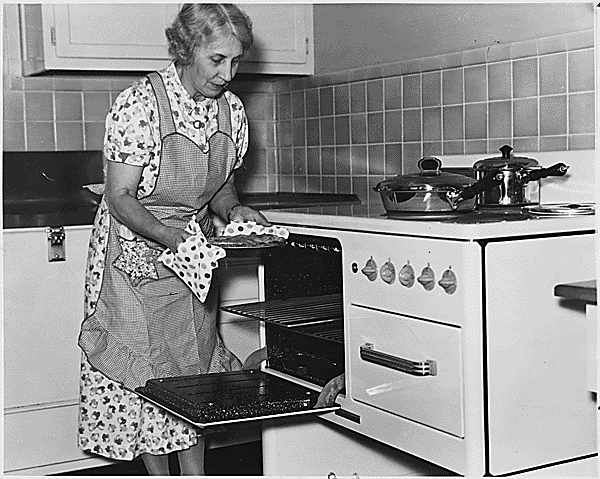Sorry that I missed October! I promise to get to "secrets" in December for the re-do challenge - there was a lot going on and that's a tricky one for writing.
The Hunger Games and its sequels are set in the far future, in an America ravaged by climate change and changed politically beyond recognition. However, there's
so much influence from the 1930s and early 1940s in the costuming and design that I tend to spend a lot of my time watching for that. This is really an image-heavy post rather than a text-based one, because I want to highlight these design elements that your eye might have skated over.
Warning: there's a spoiler for the latest movie in here. It's from the book, but if you're a movie-only fan ...
Very little in the various districts would look out of place for rural Depression-era towns. The buildings are dilapidated shanties or abandoned factories, with nothing futuristic about them.
 |
| Two views of District 12. |
 |
| Compare to this image of homes in Mobile, Alabama in 1937 taken for the Resettlement Administration. From Shorpy |
Even their belongings are early 20th century, apart from the 1980s-looking radio up there. Note the ca. 1900 photograph!
We see clothes that also wouldn't be out of place in a movie set during the Depression on citizens in all the districts, but we see them in the greatest detail on the people of 12 during the first movie. On girls and women, this generally means high necklines with collars, puffed short sleeves/shoulder emphasis, narrow silhouettes, and bias cuts. For boys and men the effect is less pronounced - buttoning shirts with suspenders - but a short-back-and-sides haircut parted on the side is not common today.
 |
| Photo from the Rural Electrification Commission, ca. 1935; FDR Library |

Even the china waiting for Katniss and Peeta on the train is styled
very much like Art Deco tableware of the era.
The 1930s aesthetic turns up in the other districts, but the camera doesn't linger over them enough to notice. We get the most time with District 10 during the beginning of the Victory Tour:
 |
| Rue's family |
 |
| District 10 |
 |
| Unemployed men in Scotts Run, WV, 1937; NARA |
And our big SPOILER, which made me ridiculously happy in the theater: Annie Cresta's veil. That style, with the veil held close over the crown of the head, was so typical of the 1920s and 1930s that my immediate reaction was joy that they were still doing the Depression references for me.
(More examples can be seen on
this Pinterest board.)
Now what about the Capital? In most scenes, fashion in the Capital is completely wild, based on Alexander McQueen and avant-garde modern couture - but the 1930s still comes through here and there, especially in the first film.
 |
| Tailleur habillé, 1937; NYPL |
Effie's first costume is highly reminiscent of the late 1890s and the 1930s at the same time. The term "the Gay Nineties" was coined in 1926, when the period was nostalgically harkened back to as a time of (northern American) wealth, stability, and values - similar to the way the 1950s are referenced today. The puffed sleeves of the later 1930s can be seen as historicism based on that period, and Effie's outfit here reflects both the '30s and the '90s at the same time.
In some of the earlier scenes set in the Capital, we have a huge amount of extras dressed relatively simply. The puffed sleeves seen on young women in District 12 are repeated, and shoulders are a huge focus. (Which can also be seen as a reference to the 1980s, but the '80s were repeating the '40s, so.) There are also a lot of hats like Effie's, brimless and placed toward the front of the head, as well as hats with a vertically-angled brim.
 |
| André fashion plate, 1939; NYPL |
Even when Effie's in District 13, she arranges her headwrap into something resembling
the turban styles of the early 1940s.
Just as the buildings in District 12 resemble the run-down rural homes of the Depression, the buildings of the Capital are historical references as well. Specifically, they embody the principles of 20th century
Fascist architecture, which was based on hard-edged, massive buildings that inspired fear and awe in the viewer, reminding them of the power of Imperial Rome. Being CGI and/or a set means, of course, that they can be taken to an extreme that Mussolini could have only imagined.
Even the symbol of Panem, displayed prominently in the Capital, is essentially the United States seal redrawn in Art Deco style and given a subtle Roman flavor.
(The Presidential Palace, on the other hand, is designed on an 18th century theme inside and out. Perhaps referencing the
ancien régime? That would be appropriate.)
Thank you so much for putting up with this non-standard Historical Sew Monthly post!





_fsa_8a00156_http-_hdl.loc.gov_loc.pnp_fsa.8a00156.jpg/800px-thumbnail.jpg)



























Hey! I actually work at the site where they filmed for President Snow's mansion. It's the Swan House at the Atlanta History Center. The home was built in the late 1920s, and while some of its interiors have an ancien regime feel to them, you're still pretty spot-on with your analysis! The Inman family, who built the Swan House, were old money folks who went through the Depression pretty much unscathed- far more like Capitol People than anything else. :)
ReplyDeleteI loved this detail from the films and though the incorporation of this particular historical aesthetic was just so smart and creative. I think I drove my husband nuts talking about through the movies :)
ReplyDelete